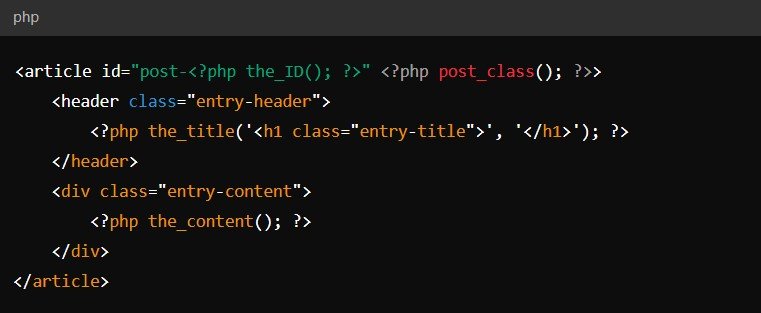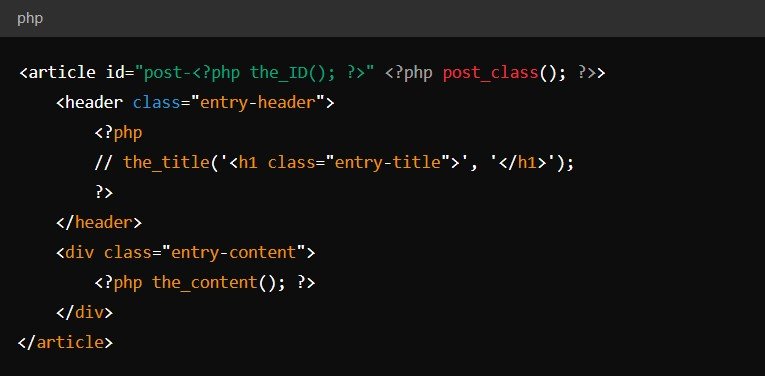Explanation of Page Titles in WordPress

In WordPress, page titles serve as the primary headline for your content, appearing at the top of each page or post. These titles are essential for both users and search engines as they provide a clear indication of the content’s subject matter. The page title typically appears in several key places:
- At the top of the page or post, serving as a visual guide for readers.
- In the browser tab, helping users navigate between multiple open tabs.
- In search engine results, where it acts as a clickable headline that attracts potential visitors.
WordPress allows you to set and edit page titles easily through the WordPress editor. However, there are instances where you might prefer to do WordPress hide page title for a more streamlined or customized appearance.
Reasons Why Users Might Want to Hide Page Titles

There are several reasons why users might choose to hide the page title in WordPress. Understanding these reasons can help you decide if hiding page titles aligns with your website’s goals and design.
- Design Aesthetics: One of the primary reasons for hiding page titles is to enhance the visual appeal of a website. Certain design themes and layouts might look more polished and cohesive without a visible page title. For example, a homepage with a large, central image or a hero section might appear cluttered if the page title is displayed.
- SEO Considerations: While page titles are crucial for SEO, there are scenarios where hiding them can be beneficial. If a page title disrupts the flow of content or negatively impacts the user experience, hiding it can create a more engaging and readable page, potentially reducing bounce rates. However, it’s important to ensure that the title is still present in the HTML code for search engines to index.
- Accessibility: In some cases, the visual design might include alternative methods for conveying the page’s subject, such as through images, icons, or custom typography. Hiding the page title can sometimes help in maintaining a cleaner, more accessible design. However, always ensure that the page remains accessible by using proper HTML structure and ARIA labels.
- Custom Landing Pages: For landing pages, sales pages, or other specialized content, the page title might not be necessary. These pages often have unique designs that focus on specific actions or messages. Hiding the page title can allow for greater flexibility in presenting content that is tailored to the visitor’s needs.
- Consistency Across the Site: Some websites prefer a consistent look and feel across all pages. If certain pages or posts require a different design approach, hiding the page title can help maintain uniformity, ensuring that all elements align with the overall site design.
Hiding the page title in WordPress can be a strategic choice to enhance design aesthetics, improve SEO, ensure accessibility, create custom landing pages, or maintain consistency across your website. By carefully considering the reasons and implementing best practices, you can achieve a more polished and user-friendly website.
Method 1: Using a WordPress Plugin
A. Introduction to Using Plugins for This Purpose

Plugins are an essential part of the WordPress ecosystem, offering users a way to extend the functionality of their website without having to write custom code. When it comes to hiding page titles, several plugins can simplify this task, allowing you to manage page titles directly from your WordPress dashboard. Using a plugin is particularly beneficial for users who may not be comfortable editing theme files or writing CSS.
B. Recommended Plugins
- Hide Page and Post Title: This plugin is designed specifically to hide titles on pages and posts. It provides a straightforward interface where you can select which titles to hide without affecting other content on the page.
- Title Remover: Another excellent plugin, Title Remover, allows you to hide titles with just a few clicks. It’s lightweight and doesn’t add unnecessary load to your site, making it a popular choice for many WordPress users.
C. Step-by-Step Guide on Installing and Activating the Plugin
- Log in to Your WordPress Dashboard: Navigate to your WordPress admin area by logging in with your credentials.
- Go to Plugins > Add New: From the left-hand menu, hover over “Plugins” and click on “Add New.”
- Search for the Plugin: In the search bar, type the name of the plugin you want to install, such as “Hide Page and Post Title” or “Title Remover.”
- Install the Plugin: Once you find the plugin, then click on the “Install Now” button which is next to it and the installation process will begin.
- Activate the Plugin: After the completion of Installation process, click on the “Activate” button to enable the plugin on your website.
D. How to Use the Plugin to Hide Page Titles
- Access the Plugin Settings: After activating the plugin, you will usually find its settings either under the “Settings” menu or as a new item in the left-hand menu of your dashboard.
- Select the Page or Post: Go to the page or post where you want to hide the title. Edit the page by clicking on its title from the list of pages or posts.
- Hide the Title: Depending on the plugin, you will see an option to hide the title within the page editor. For example, with the “Hide Page and Post Title” plugin, you might see a checkbox labeled “Hide Title” in the right-hand sidebar.
- Update or Publish: After selecting the option to hide the title, make sure to update or publish the page to save your changes.
By using plugins like “Hide Page and Post Title” or “Title Remover,” you can efficiently manage and hide page titles across your WordPress site, ensuring a cleaner and more customized appearance without the need for coding.
Method 2: Editing the Theme (for Advanced Users)

A. Warning About Modifying Core Files
Modifying core theme files can be risky because any updates to the theme can overwrite the changes done by you earlier, causing them to be lost. Additionally, incorrect modifications can break your site or make it unstable. Therefore, it’s essential to take precautions such as creating backups and using a child theme to ensure that your customizations are preserved and your site still remains functional after the changes.
B. Creating a Child Theme (Recommended)
All the functionality and styling of the parent theme is inherited by the child theme which is a seperate theme. By using a child theme, you can make changes to the code without affecting the parent theme’s files. This approach ensures that your customizations remain intact even after the parent theme is updated or modified.
- Create a New Folder: In your WordPress installation directory, navigate to wp-content/themes and create a new folder for your child theme. Name it something like your-theme-child.
Create a Stylesheet: Inside your child theme folder, create a new file namely style.css. Add the following code to the file, replacing the placeholders with your theme’s information:

- Create a Functions File: Create a new file named functions.php in the child theme folder. Add the following code to enqueue the parent theme’s stylesheet:

- Activate the Child Theme: Go to your WordPress dashboard, navigate to Appearance > Themes, and activate your new child theme.
C. Locating the Page Title Code in the Theme’s Template Files
To hide the page title, you need to identify where the title is being generated in the theme’s template files. Typically, the title is located in the header.php, page.php, or single.php files. Use a code editor to open these files and look for the following PHP code, which is responsible for displaying the title:

D. How to Remove or Modify the Code to Hide the Title
Once you locate the code that generates the page title, you can either remove it or comment it out to hide the title.
- Remove the Code: Simply delete the line that contains <?php the_title(); ?>. This will permanently remove the title from being displayed.
Comment Out the Code: If you prefer a reversible change, comment out the line by wrapping it in PHP comment tags:

- This approach ensures that the code is ignored by WordPress but can be easily reactivated if needed.
E. Example Code Snippets
Here are examples of how you might modify the page.php file to hide the page title:
Before:

After (code removed):

After (code commented out):

By following these steps, advanced users can manually hide page titles in their WordPress theme, ensuring a custom look and feel that aligns with their design preferences. Always remember to back up your files before making any changes and consider using a child theme to preserve your customizations.
Method 3: Using CSS (for Specific Styling)

A. Basic Understanding of CSS Required
To hide the page title using CSS, a basic understanding of Cascading Style Sheets (CSS) is helpful. CSS is used to style and layout web pages, controlling the appearance of elements such as fonts, colors, and spacing. By targeting specific elements with CSS selectors, you can apply custom styles, including hiding elements.
B. Identifying the CSS Selector for the Page Title
Before you can hide the page title, you need to identify the CSS selector that targets the title element. This can be done by simply using the browser’s developer tools:
- Open Developer Tools: Right-click on the page title in your browser and select “Inspect” or “Inspect Element.”
- Find the Title Element: In the developer tools window, locate the HTML element that corresponds to the page title. Commonly, page titles are wrapped in <h1>, <h2>, or similar heading tags.
- Note the Selector: Identify the class or ID associated with the title element. For example, it might look like <h1 class=”entry-title”> or <h1 id=”page-title”>.
C. Adding Custom CSS to Hide the Title
Once you have identified the CSS selector for the page title, you can add custom CSS to hide it. This can be done by:
- Navigating to Customizer: Go to your WordPress dashboard and navigate to Appearance > Customize.
- Adding Custom CSS: In the customizer, find the “Additional CSS” section where you can add your custom styles.
- Writing the CSS Rule: Use the identified selector to write a CSS rule that hides the title.
D. Example CSS Code
Here are examples of CSS code snippets that can be used to hide the page title:
- Using a Class Selector:

2. Using an ID Selector:

3. Targeting a Specific Page: If you want to hide the title on a specific page, use the page ID. For example, if the page ID is 123:

E. Caution About Potential Conflicts with Other Styles
While using CSS to hide the page title is a simple and effective method, be aware of potential conflicts with other styles:
- Theme Updates: Changes made to the theme’s CSS might override your custom styles. Regularly check to ensure your custom CSS is still effective after theme updates.
- Other Plugins and Custom CSS: Other plugins or custom CSS rules might conflict with your code, causing unexpected results. If this happens, you might need to use more specific selectors or !important to ensure your rules take precedence.
By carefully implementing these steps, you can use CSS to hide the page title in WordPress, achieving the desired look and feel for your site without modifying core files or using additional plugins.
Method 4: Using Page Builders (if Applicable)

A. Overview of Popular Page Builders
Page builders are powerful tools that allow users to create and customize their WordPress pages with a drag-and-drop interface. They provide extensive control over page layout and design, making it easy to create professional-looking websites without needing to write code. Here are a few of the most popular page builders:
- Elementor: Known for its user-friendly interface and wide range of widgets, Elementor allows users to design pages visually in real-time. It offers both free and premium versions, with the premium version providing more advanced features and templates.
- Divi Builder: Part of the Divi Theme by Elegant Themes, Divi Builder is highly versatile and comes with a large library of pre-designed templates. It offers a visual drag-and-drop interface, making it easy to customize every aspect of your page.
- Beaver Builder: This page builder is known for its stability and clean code. It provides a range of modules and templates to help you build custom layouts. Beaver Builder is compatible with almost any theme and is easy to use, even for beginners.
- WPBakery Page Builder (formerly Visual Composer): WPBakery offers both front-end and back-end editing capabilities, giving users flexibility in how they design their pages. It includes a wide range of content elements and is compatible with many WordPress themes.
B. Steps to Hide Page Titles Using the Page Builder’s Interface
Each page builder has its own methods for hiding page titles, but the general process is quite similar. Below are the steps for Elementor and Divi Builder, two of the most popular page builders.
Elementor:

- Install and Activate Elementor:
- Go to your WordPress dashboard.
- Navigate to Plugins > Add New.
- Search for “Elementor” and install it.
- Activate the plugin once installed.
- Create or Edit a Page with Elementor:
- Navigate to Pages > Add New or edit an existing page.
- Click on the “Edit with Elementor” button to open the Elementor editor.
- Access the Page Settings:
- In the Elementor editor, click on the gear icon (settings) in the bottom left corner to open the page settings panel.
- Hide the Title:
- In the page settings panel, you will see an option labeled “Hide Title.”
- Toggle the switch to “Yes” to hide the page title.
- Save Your Changes:
- Click on the “Publish” or “Update” button to save your changes.
Divi Builder:

- Install and Activate Divi Theme or Divi Builder Plugin:
- Purchase and download the Divi Theme or Divi Builder plugin from Elegant Themes.
- Go to your WordPress dashboard.
- Navigate to Appearance > Themes to install and activate the Divi Theme, or Plugins > Add New to install and activate the Divi Builder plugin.
- Create or Edit a Page with Divi Builder:
- Navigate to Pages > Add New or edit an existing page.
- Click on the “Use The Divi Builder” button to open the Divi Builder editor.
- Enable the Visual Builder:
- Click on the “Enable Visual Builder” button at the top of the page to enter the visual editing mode.
- Access the Page Settings:
- Click on the three horizontal lines icon (settings) in the purple menu bar at the bottom of the screen to open the page settings.
- Hide the Title:
- In the settings menu, navigate to the “Advanced” tab.
Add the following custom CSS code in the “Custom CSS” section to hide the page title:

- Save Your Changes:
- Click on the green checkmark to save your settings.
- Exit the visual builder and click on the “Publish” or “Update” button to save your changes.
General Tips for Other Page Builders:
- Check Page Settings: Most page builders have an option in the page settings to hide the title. Look for settings or toggles labeled “Hide Title” or similar.
- Use Custom CSS: If there is no direct option to hide the title, use the builder’s custom CSS feature to add CSS code that targets and hides the title element.
- Refer to Documentation: Each page builder has extensive documentation and support forums where you can find specific instructions for hiding page titles.
By using page builders like Elementor, Divi, Beaver Builder, or WPBakery, you can easily hide page titles and customize your pages to achieve the desired design and functionality. This method is user-friendly and does not require any coding knowledge, making it accessible for users of all skill levels.
Conclusion
In this guide, we explored various methods for wordpress hide page title, each catering to different needs and skill levels:
- Using a WordPress Plugin: Plugins like “Title Remover” and “Hide Page and Post Title” offer a straightforward way to wordpress hide page title without altering code. These plugins are user-friendly and ideal for those who have zero knowledge of code or theme files.
- Editing the Theme (for Advanced Users): For users good in coding, for them directly editing the theme’s template files allows for more control. By creating a child theme and modifying files such as page.php, you can hide page titles while preserving your customizations through theme updates.
- Using CSS (for Specific Styling): Adding custom CSS provides a flexible and easy way to wordpress hide page title based on specific selectors. This method is useful for users who want to make targeted style adjustments without modifying theme files or any use of plugins.
- Using Page Builders (if Applicable): Page builders like Elementor and Divi offer built-in options or custom CSS features to hide page titles. This method is ideal for users who prefer visual design tools and want to customize their pages easily.
Why might I want to hide a page title in WordPress?
You might want to hide a page title to achieve a cleaner design, especially for landing pages or custom page layouts where the title is redundant or conflicts with the page’s visual design.
How can I hide a page title using WordPress settings?
Some themes have built-in options to hide page titles. To check if your theme offers this feature:
- Go to Pages in your WordPress dashboard.
- Edit the page where you want to hide the title.
- Look for an option in the page editor or page settings panel to hide or disable the page title.
Can I hide a page title using custom CSS?
Yes, you can hide a page title using custom CSS. Add the following CSS code to your theme’s customizer or stylesheet:
.page-id-XX .entry-title {
display: none;
}Replace XX with the specific page ID, which you can find in the page’s URL or using a page inspector tool.
How do I find the page ID for custom CSS?
To find the page ID:
- Go to Pages in your WordPress dashboard.
- Hover over the page title you want to modify.
- Look for the page ID in the URL preview at the bottom of your browser or in the URL itself, e.g., post=XX.
Are there plugins that can help hide page titles?
Yes, several plugins can help you hide page titles without needing to add custom CSS. Some popular options include:
- Hide Title: Allows you to hide titles on a per-page or post basis.
- Title Remover: Provides a simple interface to remove page titles.
- Elementor: If using the Elementor page builder, it offers an option to hide titles directly within the page builder’s settings.









